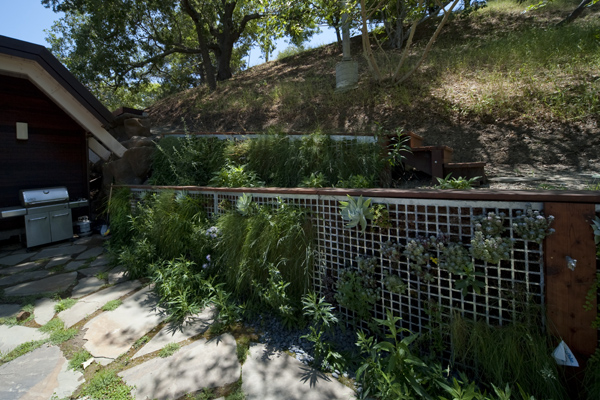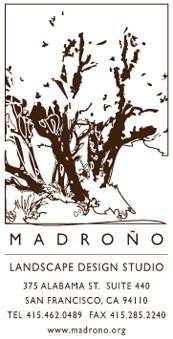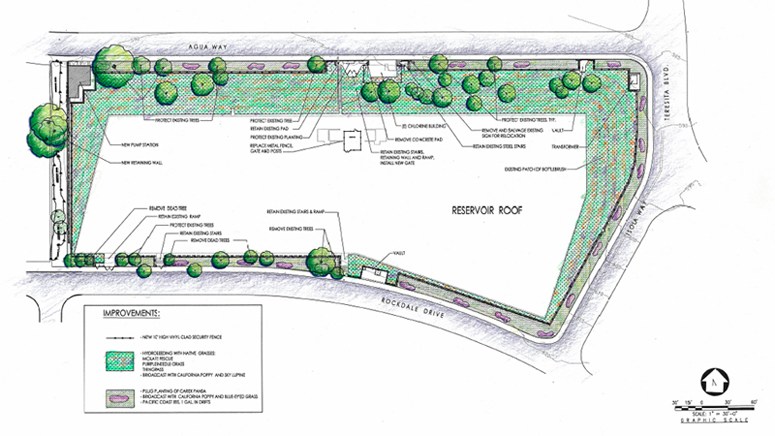
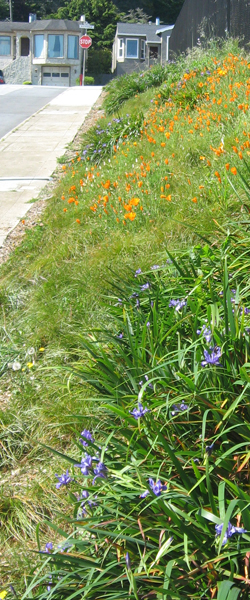
Score a point for the city planners: their new landscaping at the Stanford Heights Reservoir, in the San Francisco neighborhood of Miraloma Park uses locally appropriate native plants in simple bold strokes of panache. The design is a triumph of simplicity.
Here, the design chooses two beautiful species as a foundation for all the plantings adjacent to sidewalks: Carex pansa and Pacific Coast Iris.
The Pacific Dune Sedge (Carex pansa) looks like a meadow grass, and it spreads underground by rhizomes like running bamboo. It grows well in heavy soil (though it prefers sand) and can tolerate sun, drought, and the traffic of dogs.
The iris is gorgeous and locally authentic; Its blue flower and long pointed leaf may be as emblematic of San Francisco as any plant I know.
Together they bind the perimeter of the reservoir with sustainability and beauty. Water-wise, insect-friendly, pleasing to the eye, and mostly self-sufficient -- what more can you ask?
The plan also called for sowing seed of blue-eyed grass (which didn't come up) and California poppy (which did). Count my vote a yawn. Haven't we had enough poppies? So many other local and lovely annual wildflowers to choose from -- anybody for Clarkia? Collinsia? Lasthenia? Limnanthes? Anybody?
Continue reading Native Carex and Iris in Miraloma Park →.
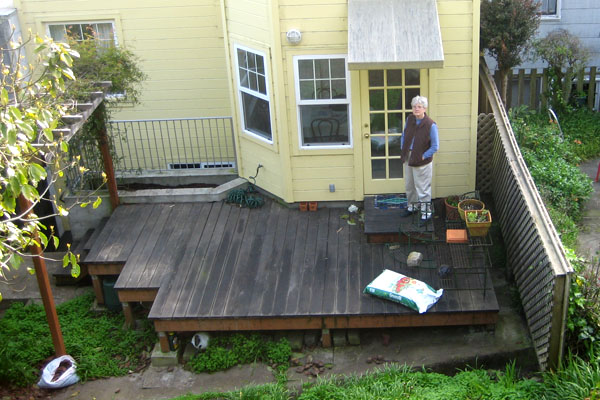 Question: How to deal with this ugly yet necessary piece of engineering?
Question: How to deal with this ugly yet necessary piece of engineering?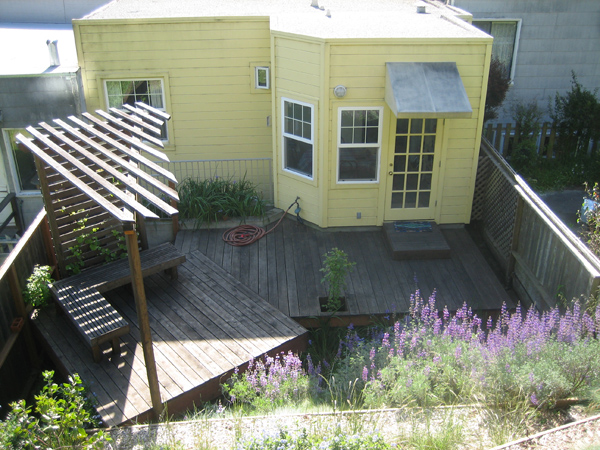 Answer: Add another level of deck to bridge the gap. Set the platform at an angle to diverge from the rectangular facade of the house, and to suggest triangular shapes in the landscape. Cantilever all four edges 24" over the beams, thus hiding the posts so the deck appears to float above the ground.
Answer: Add another level of deck to bridge the gap. Set the platform at an angle to diverge from the rectangular facade of the house, and to suggest triangular shapes in the landscape. Cantilever all four edges 24" over the beams, thus hiding the posts so the deck appears to float above the ground.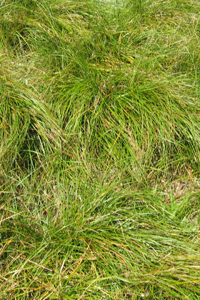 Consider the sedge (genus Carex), that vigorous and beautiful groundcover, when thinking about plausible substitutes for lawn.
Consider the sedge (genus Carex), that vigorous and beautiful groundcover, when thinking about plausible substitutes for lawn.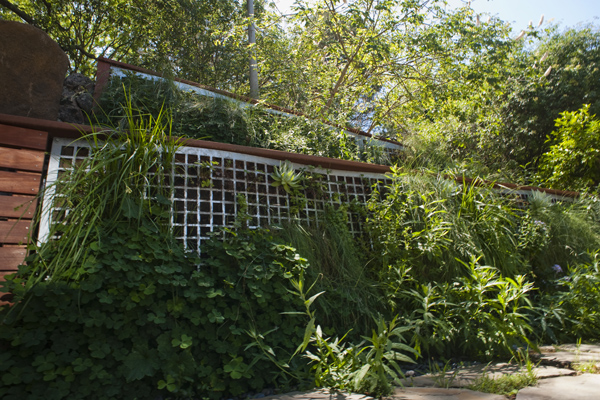 SCENARIO: Single-family residence on steep 2-acre property in Los Altos Hills, California. The lovely and level back patio was marred by the slope immediately above it: ugly bare dirt, too steep for traditional planting, and eroding at the base of the house's diagonal support beams. The situation called for a bold stroke of design creativity.
SCENARIO: Single-family residence on steep 2-acre property in Los Altos Hills, California. The lovely and level back patio was marred by the slope immediately above it: ugly bare dirt, too steep for traditional planting, and eroding at the base of the house's diagonal support beams. The situation called for a bold stroke of design creativity.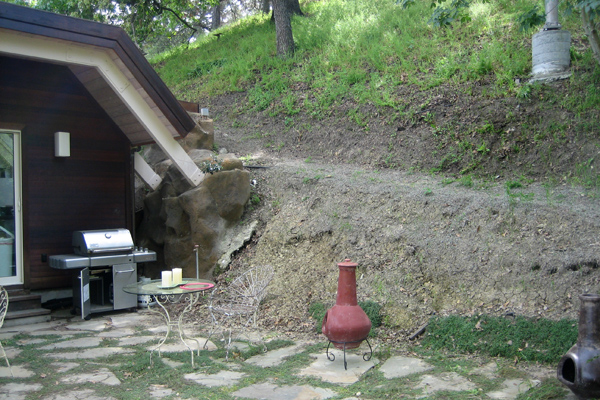 QUESTION: How to turn this liability -- a barren and degraded slope -- into a lush and attractive asset?
QUESTION: How to turn this liability -- a barren and degraded slope -- into a lush and attractive asset?